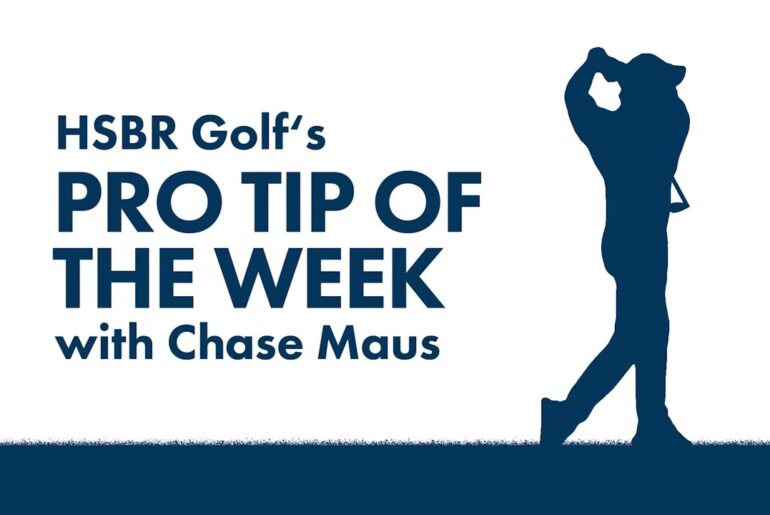In golf, there is a 100-page manual that outlines the rules around what makes golf clubs and equipment conforming (or legal) in the eyes of the USGA and the R&A. There are a lot of specific rules about drivers, including how much energy can be transferred in a swing to the golf ball — measured by something known as the coefficient of restitution and tested by something called characteristic time. I explain what those terms mean in this video, as well as how a driver can become illegal over time by thinning out the face and making it more flexible. Also, you’ll be stunned to know just how little time the golf club makes impact with the ball!
Subscribe to my channel for golf equipment news and reviews of drivers, irons, putters, shoes, bags and more. I share my adventures playing golf and my chase to get better at this game. I love sharing what I’ve learned to make the game easier for you, too. My day job is running Golf News Net ( @golfnewsnet1 ), our Golf News Net FAST TV channel, sharing golf news on my website, our 24/7 GNN Radio and social channels.
FOLLOW ME
Golf News Net: https://thegolfnewsnet.com
X: https://twitter.com/ryanballengee
Facebook: https://facebook.com/ryanballengeegolf
Insta: https://instagram.com/ryanballengee
at the PGA Championship Rory Mroy and Scotty Sheffler both had their drivers tested ahead of the tournament at Quail Hollow and they were both deemed non-conforming by the USGAA which handles equipment testing for the PJ of America PJ Tour everybody else basically in the United States and Mexico The RNA handles everybody else So what makes a driver non-conforming And what happened specifically to Rory and Scotty’s drivers that made them quote unquote illegal even though you’re not going to jail for them Well we’re going to talk about that in this video I’m Ryan Bing with Golf Newset And there are a lot of rules that determine the conformity of equipment to the rules of golf There’s a a manual that the USGA and the RNA governing bodies of golf produce It’s a 100 pages long There there’s a lot of stuff in there a lot of graphics and explanations and there’s a lot of things that govern what makes equipment abiding by the rules Right For drivers there’s a whole ton of set of rules unto themselves about how wide the hitting area can be how wide the face can be how much moment of inertia there can be in the vertical axis as opposed to the horizontal axis how much water the club head can displace That’s the 460 cc’s thing But the most likely thing that comes up in testing of drivers at professional golf tournaments is a thing called characteristic time And characteristic time is the amount of time that the golf ball spends on the club face at impact So what the USGA and the RNA have as their equipment rules is this standard known as the coefficient of restitution which is basically a fancy physics way of saying how much energy is transferred at impact from that energy making moment which is your golf swing which has a kinetic energy component to it Right Kinetic energy is moving energy And then at impact it becomes what’s called elastic potential energy because it’s moving potentially from the thing that’s moving right your driver And the kinetic energy that could be transferred in potential is what happens at impact to the golf ball right So obviously when you hit it more flush in the face you have a better chance of transferring more energy because there’s less twist and turn It’s built for that efficiency right You want to hit the center of the club face as best you can but drivers are better way better than they used to be at offc center coefficient of restitution So you get more out of poor hits because of face curvature better materials but also face thinness So what happens in testing They can’t test the coefficient of restitution really easily in the field There’s a maximum limit of 82.2% So what happens is when you take a golf swing and you make kinetic energy and then you hit the ball at impact only 82.2% of the kinetic energy you make can be transferred to the golf ball when you hit it It’s a tolerance up to 83% This has been the rule since 1998 Nothing has ever changed in that regard At least basically as long as I play golf and as about as long as titanium drivers have been a thing So that’s always been the rule and it’s across the face right So you can have anywhere on the face it be about 83% With that tolerance but it can’t be more than that anywhere on the face otherwise it fails And so what happens when we test in the field The USGA can’t figure that out really easily So they have come up with a notion called characteristic time which is again how long the ball spends in collision with the club head before it you know flies off right so there is a rule about that and that is what determines whether or not your club is conforming so the current characteristic time limit from the USGA and the RNA is 239 microsconds microsconds That’s millionth of a second 239 millionths of a second That’s how little time your golf ball is supposed to spend in contact not only with this driver but every other club in your bag by the way but particularly in this case for your driver There are 18 microsconds of tolerance up or down right Obviously up is really what you care about So for a maximum limit of 257 microsconds and they test that using a pendulum device They basically swing a pendulum at it looks like a golf ball and then it hits off of it and they measure how long it takes for the ball to move away basically when it hits it and then that determines whether the driver is conforming or not And of course there are all kinds of other rules for things they test but the thing that happens with modern driver faces is they are extremely thin So what happens when you hit it more and more and more is you kind of thin it out over time If you’ve ever used uh a kind of butcher’s hammer something to pound meat with in terms of tenderizing it right You kind of flatten it out If you’re ever kind of making like a chicken fried steak or something like that you kind of tend to take that steak and you kind of make it flatter by hitting it over and over again until it flattens out Well the same thing happens here with a driver face The more you hit it the more it flattens out and gets thinner and spreads out ever so slightly And so that makes it against the rules of golf Now does that mean this gives an enormous performance benefit to a player that is using a non-conforming driver Not really So in 2019 at the Open Championship Xander Schoffley’s driver was tested at Royal Port Rush and it was deemed non-conforming and it was off by literally one microcond 1 millionth of a second But that made it illegal So you couldn’t use it But what did that mean performance-wise Well almost nothing in terms of the tolerance that 18 microsconds we talked about earlier between what you could have legally and what the maximum is at 257 microsconds number That equates to about a quarter of a mile per hour of ball speed And that’s about a yard max And that’s under ideal conditions So yes those drivers that Mroy and Scotty Sheffller had before the PGA Championship were non-conforming and they were taken out of play and that’s what should happen But it didn’t really translate to a performance benefit that made a big deal and it wouldn’t have made a big deal in the competition Okay over the course of 72 holes you hit 14 drivers probably per round You get a yard max and that’s if it was way out of compliance really it’s probably less than that It’s probably like a quarter of a yard at most So over the course of 72 holes that really didn’t mean much of anything to guys like Sheffler and Maroy who are Walmarting guys hitting it 20 30 40 50 yards past them So for the people who might be inclined to conspiracy theories and thinking that these two guys were using drivers that were yes non-conforming illegal whatever term you want to use and that they were getting some huge performance benefit out of it That’s not the case They don’t get much out of it whatsoever But rules are rules and the manufacturers are supposed to do their job and push driver faces the absolute limits of the rules that we have for equipment in the game And so from time to time with the advance in materials these drivers will eventually become non-conforming And then that’s when you put a new head into place and you start the process all over And you keep hitting them and keep hitting them and keep hitting until they are non-conforming hand there should be more equipment testing about this kind of thing for full fields for PGA Tour events not just samplings at major championships We need to see more of that but the performance benefit from having a non-conforming driver isn’t so great that it means a whole heck of a lot given the modern materials and how thin they are in the first place Hopefully this helps explain things Hopefully this helps you kind of understand what makes equipment conforming and not at least in the context of driver impact There are a whole manual of other things that matter but all the equipment that is made these days is made to fit USGA and RNA regulations And the thing that is really most likely to happen that makes something non-conforming is what happens with characteristic time So rest assured if you’ve been hitting your driver for 10 or 12 years there’s a decent chance that you have hit into non-conforming status at this point But no one’s coming for you Don’t worry about it Keep using it Enjoy that extra yard have a great time with it In the meanwhile the best players in the world they have to worry about it a whole lot more often than us Subscribe for more information Hope you have a great day Thanks for watching We’ll see you next time








7 Comments
So cool to hear this fully explained. What a complicated system!
The problem is that people hear “non-conforming” and they assume it’s like using a super launcher, or something like a fly-straight ball.
It’s illegal by strict standards, but every club in a guys bag if they’ve been playing with a set consistently for 10 years is possibly non-conforming
Great explanation.
I remember years ago when I first knew about this, I would buy a cheapest driver for £100 then wack the face with a mallet for an hour 😂 Yes it works. My Callaway driver from 2017 I think, can out drive any other driver i test. Up until last year at least. Not tried any 2025 drivers.
So us amateurs are all illegal
Going to start looking for old drivers used by pros or play it again sports.
Does carbon fiber faces thin out like titanium?
TaylorMade uses carbon composite faces.